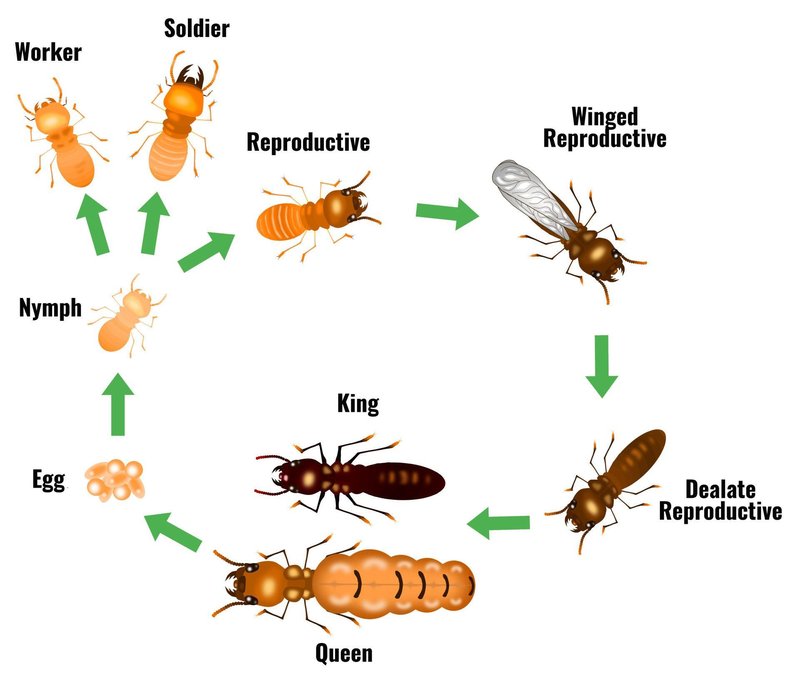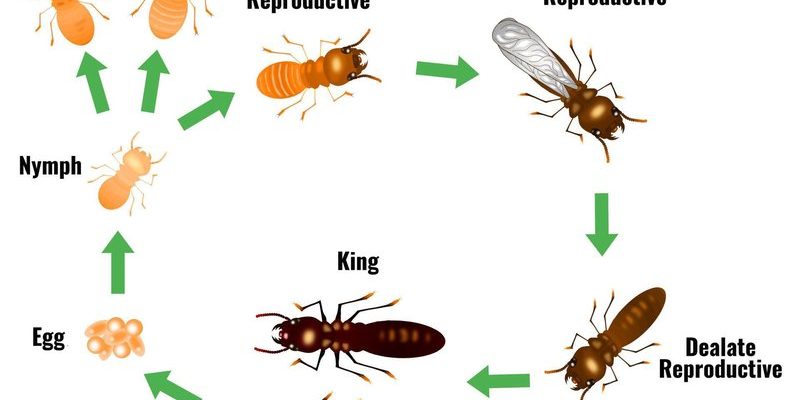
Termites belong to a group called *Isoptera*, and they’re pretty remarkable for various reasons. Not only do they play a big role in breaking down dead plant material, but they also have a highly organized social system. Just like a bustling city, each termite has a specific job to do. So, grab a cup of coffee, and let’s dive into the lifecycle of a termite!
The Stages of a Termite’s Life
Termites go through a series of stages before reaching adulthood, and understanding these stages can help us appreciate their role in nature. The lifecycle of a termite typically includes four main stages: egg, nymph, soldier or worker, and adult. Let’s break each of these down.
1. Egg Stage
The journey begins when a queen termite lays eggs. These eggs are tiny and often look like small pearls. Depending on the species, a queen can lay thousands of eggs in her lifetime. This stage can last anywhere from a few weeks to several months, depending on environmental conditions.
During this time, the eggs are kept safe and warm within the nest. Worker termites are responsible for protecting the eggs and maintaining optimal conditions. If conditions are just right—like humidity and temperature—the eggs begin to hatch. It’s almost like waiting for a butterfly to emerge from its cocoon, only these little creatures are destined for a life of teamwork and communal living.
2. Nymph Stage
Once the eggs hatch, they transform into tiny nymphs. At this stage, you might think of them as miniature versions of adult termites. Nymphs are soft-bodied and pale, making them quite vulnerable. Here’s the thing: they need to be cared for by worker termites until they grow a bit stronger.
Nymphs undergo several molts as they grow, transitioning into different forms. They can be thought of as teenagers figuring out their roles in life. As they grow, they start to develop characteristics of either a soldier, worker, or reproductive adult. Can you see the parallels to human development? Just like young adults, they begin to explore their skills and find their place in the community.
3. Worker and Soldier Stages
Once nymphs mature, they separate into two main roles: workers and soldiers. Worker termites are the backbone of the colony. They forage for food, care for the queen and eggs, and maintain the nest. You might say they’re like the busy bees of the termite world, buzzing around to keep everything running smoothly.
On the other hand, soldier termites have a protective role. Equipped with strong jaws, they defend the colony against predators, like ants. It’s a tough job, but someone has to do it! This division of labor is essential for the colony’s survival, showcasing the highly organized social structure of termites.
4. Adult Termites
Once they grow into adults, termites have a much clearer purpose: reproduction. In many colonies, only the queen and a few select males will mate, while the rest will continue their specialized tasks. The queen can live for several years, continuously laying eggs. Isn’t that amazing?
Adult termites are about the size of a small ant and vary in color. They can be white, cream, or even brownish depending on the species. They may live for several years, during which time they contribute to the hive’s growth and stability. In essence, adult termites are the caretakers of the colony’s future, ensuring that the lifecycle starts all over again.
Why Understanding Their Lifecycle Matters
You might be wondering why it’s important to understand the lifecycle of termites. Besides the obvious interest in nature’s wonders, this knowledge has practical implications. For homeowners, recognizing the signs of a termite infestation can save a lot of time and money.
Here are some reasons why this knowledge is key:
- Prevention: Knowing the lifecycle helps you identify potential threats. Early detection means you can take action before a small problem becomes a costly disaster.
- Treatment: Understanding at which stage to target treatments can yield better results. For instance, some pesticides work best on nymphs.
- Ecological Impact: Termites play a significant role in decomposing dead organic material, enriching the soil. Understanding their lifecycle helps us appreciate and protect their habitat.
Common Misconceptions About Termites
There are various myths surrounding termites that need busting. One of the most common misconceptions is that all termites destroy wood. While it’s true that many do, some species actually play beneficial roles in their ecosystems.
Another myth is that termites can cause damage quickly. While they can be destructive, most species take their time munching through wood. They’re more like slow artisans than speed demons. Understanding these facts can help put termite fears into perspective, and it can also guide better pest control practices.
The lifecycle of a termite is a remarkable journey from a tiny egg to a complex adult, filled with teamwork and purpose. By understanding this process, you can appreciate not just termites but the broader marvel of nature.
So next time you see a termite, whether it’s in the wild or the unfortunate intruder in your home, remember the tiny life journey that brought it there. By paying attention to their lifecycle, you can protect your own space while respecting the key role they play in our ecosystems. Just like every detail matters in a well-orchestrated performance, every termite has its place in the grand life story of their colony.

